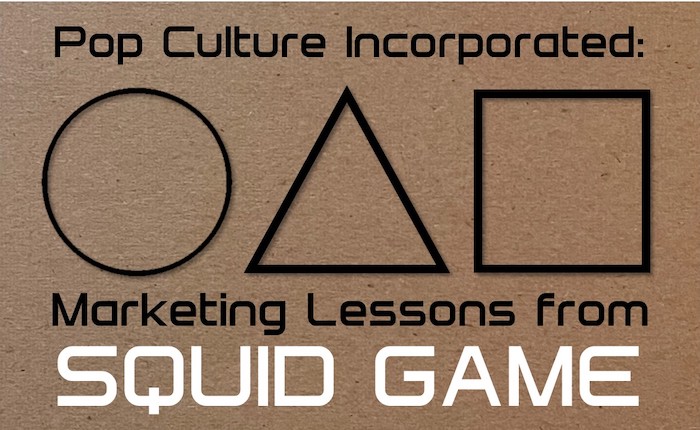Netflix’s massive hit “Squid Game” is packed with nail-nibbling tension, heartless double-crosses and cut-throat (literally) competition. If you haven’t seen it, imagine the chaos and calculation of a throng of people angling to score the last Tickle Me Elmo on the shelf in 1996, only with a lot more green tracksuits.
Millions of words have been written about why global audiences are streaming the first season, but there’s been little discussion about all the tips it gives marketers on everything from competition and teamwork to strategy and collaboration. For real – there’s a lot to learn from how the fictional contestants approach the games, and whether they win or lose.
Indeed, once you squeegee the blood from the TV screen, the show imparts several useful lessons we can apply to our roles as marketers:
Understand the objective. The first game contestants were subjected to, Red Light, Green Light, demonstrated the importance of paying attention to the point of the assignment in plain, non-negotiable terms. The people who immediately stopped walking when the creepy giant doll exclaimed “Red light” lived to play another day. Those who didn’t? Well, they learned their lesson pretty quickly, painfully – and permanently.
For marketers, the lesson is simple: Determine the objective of a campaign or initiative before digging in, then make sure every tactic you execute supports your strategy.
Don’t assume. One game required the competitors to form 10-person teams, but the overseers provided no additional information. Some competitors assumed they should lean in on brute strength, so they assembled teams based on that. Nope. It turned out to be tug of war on a bridge high in the air, which ended up (spoiler alert) rewarding strategy over blunt force. You know the old adage that when you assume, you make an ASS out of U and ME? In this case, assuming made a pile of dead contestants crumpled in a pile on the cement floor.
In marketing, making assumptions can be nearly as problematic. We need to consider everything from quantitative and qualitative data to what our experience tells us before we act. Determine what you know, and what you don’t, then move forward from there.
Listen to multiple voices. During that same challenge, when they realized they would be competing at tug of war hundreds of feet in the air, most teams took a “pull as hard as you can” approach. But our heroes listened to their frailest team member, Oh Il-nam, “the Old Man.” Turns out he knew some tricks to win tug of war from when he was a kid, from how to hold the rope to when to strategically lean backwards to gain leverage.
Sometimes the loudest voice or most aggressive colleague or client can overshadow the discussion, but savvy marketers know that it’s critical to listen to a variety of ideas and opinions from a diverse group of people.
Get creative. Some of the competitions relied on creative problem-solving, especially the dalgona honeycomb-candy challenge. How would they remove the shape from the brittle yellow candy disc without breaking it as the clock dramatically ticked down? While most took the most obvious and straightforward approach – slowly trying to break off tiny pieces or digging at it with a needle – the main character Gi-hun realized he could dissolve the sugar by licking the back of the candy.
Marketers are no strangers to creative problem-solving, and the most obvious strategy isn’t always the way to go. Often, taking a step back to look at the challenge from another angle and reframing your approach can get you where you want to be more effectively and efficiently.
Look at customers, colleagues, employees and competitors as human. In the game, it would have been easy to start considering competitors as speed bumps on the way to victory, to make it easier to do whatever it took, no matter how unsavory, to beat them. And some people did just that, throwing competitors under a figurative bus — or in this case, through a non-tempered glass bridge. But Gi-hun formed an authentic relationship with just about everyone he encountered, and it paid off.
For marketers, building relationships, practicing empathy and putting ourselves in the shoes of our customers, clients and competitors can make all the difference.
While marketers don’t generally deal with the life-and-death stakes and lethal consequences on dramatic display on this ultra-violent show, we do play to win. Gleaning some lessons from “Squid Game” can help us and our clients not only survive, but thrive.

